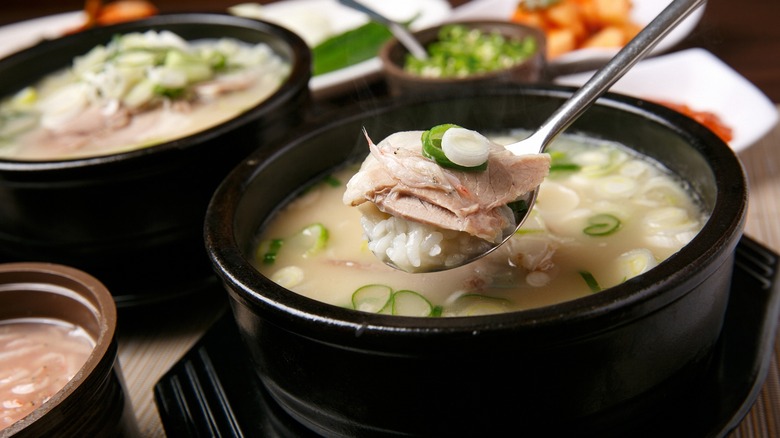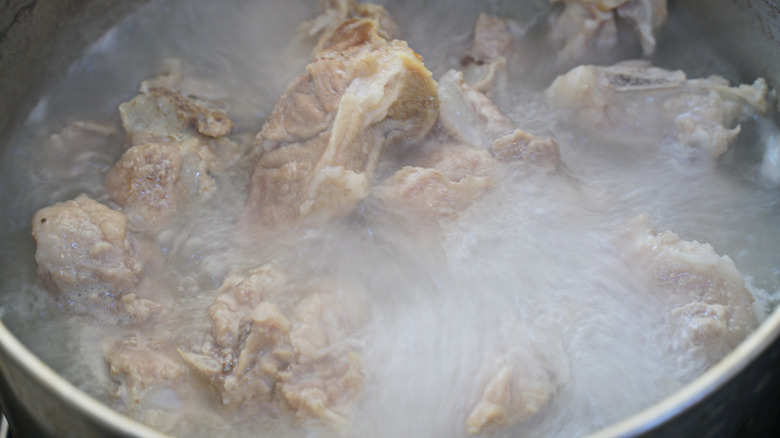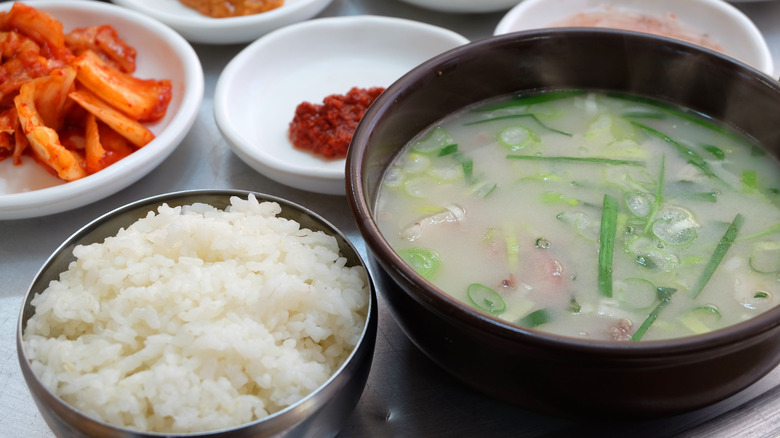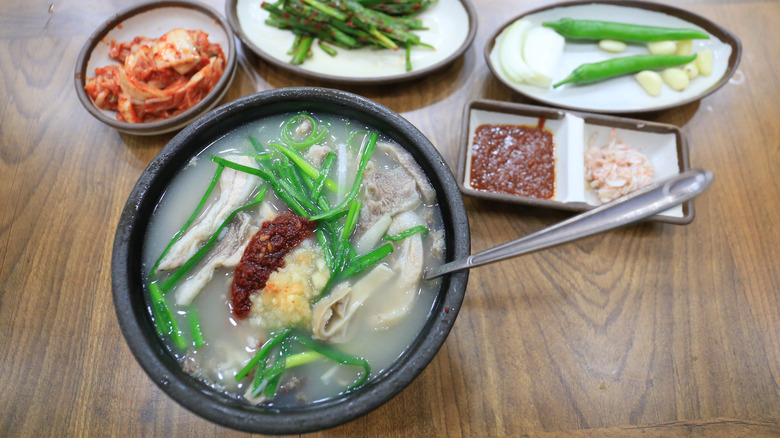Busan's Flavorful Pork Soup Dwaeji Gukbap
If you didn't know, Busan is the often overlooked second-largest city and biggest port in South Korea, as shared on its own local government's website. The colorful and mountainous coastal locale is known for many things, including its plentiful Insta-worthy seaside sites like bustling Haeundae Beach and quieter Songjeong Beach and the country's largest fish market (via Culture Trip). If you're not a fan of sand in your toes, the area is also home to stunning Buddhist temples, Asia's largest film festival, and hundreds of spas. All this to say, there is definitely not a lack of things to do on a Busan getaway.
One of the other talking points for the city's thriving tourism industry is its enviable street food scene. According to Culture Trip, Busan's Meokja Golmok, or "Let's Eat Alley," is a foodie's paradise. There, you can discover traditional dishes like tteokbokki or kimbap, per blog Millennial Abroad. You can also find more unique fare such as local specialty dwaeji gukbap, a pork-filled bone broth soup that's not something to miss out on. It's served with various side dishes, Korean condiments, and rice, but its savory taste is not the only notable thing; the dish's fascinating origins and healing properties are also worth discovering.
The history of dwaeji gukbap
Today, dwaeji gukbap has arguably reached South Korean stardom. According to Gastro Tour Seoul, Busan has a street named after the dish, and it's home to dozens of well-known dwaeji gukbap restaurants. The popularity of the soup has also spread from Busan to the rest of the Gyeongsang province, per Michelin Guide. And, arguably, the entire country has begun to catch on. Though the dish has celebrity status now, its origins are much more humble.
Historically, people in Busan made clear soup from meat, and it was a common practice to add rice to the broth (via KKday). The beginning of dwaeji gukbap itself, however, was not in ancient times but rather during the 1950s when North Koreans fled to the south of the peninsula during the Korean War. Since these refugees didn't have enough money for meat, they instead used pork bones discarded by the U.S. military to make what is now known as dwaeji gukbap.
How dwaeji gukbap is made and served
The name dwaeji gukbap literally translates to "pork, soup, rice," according to blogger John Dunphey. Its main ingredients are spelled out in the moniker, but despite its seemingly simple composition, the soup actually takes a long time to make (via Michelin Guide). To start, pork bones are boiled in water, resulting in an opaque white broth, and then different cuts of meat are added to the pot before serving.
After the lengthy preparation process, the Busan staple is usually served with a few sauces and garnishes for added complexity and flavor. But, as with most popular dishes, variations often exist. Depending on the restaurant, the soup is served piping hot with rice — either in the soup or on the side — and may also come with noodles. The dish is accompanied with optional toppings to add as you please, such as green onions, fermented shrimp, and red pepper paste, and side dishes like white onions, garlic, and different types of kimchi (via The Soul of Seoul).
When dwaeji gukbap is eaten
For the people of Busan, there are few foods more comforting than a hot bowl of savory dwaeji gukbap. Locals and visitors alike can enjoy the milky-white pork soup all year round and at any time of day, per Haps Magazine Korea. Many of the shops that sell the specialty are open from morning to late at night, and some even run 24 hours every day (via Dynamic Busan). Of course, the dish seems to be more popular during the winter, as it is an easy way to warm up during the cold months.
While anyone can take comfort in dwaeji gukbap, it may have some special benefits for people who have given birth. Follow Korean notes that the soup is commonly consumed by women recovering postpartum, but it's also considered good for illnesses and hangovers. This might be because the dish is full of nutrients like calcium and protein, per The UOS Times.



